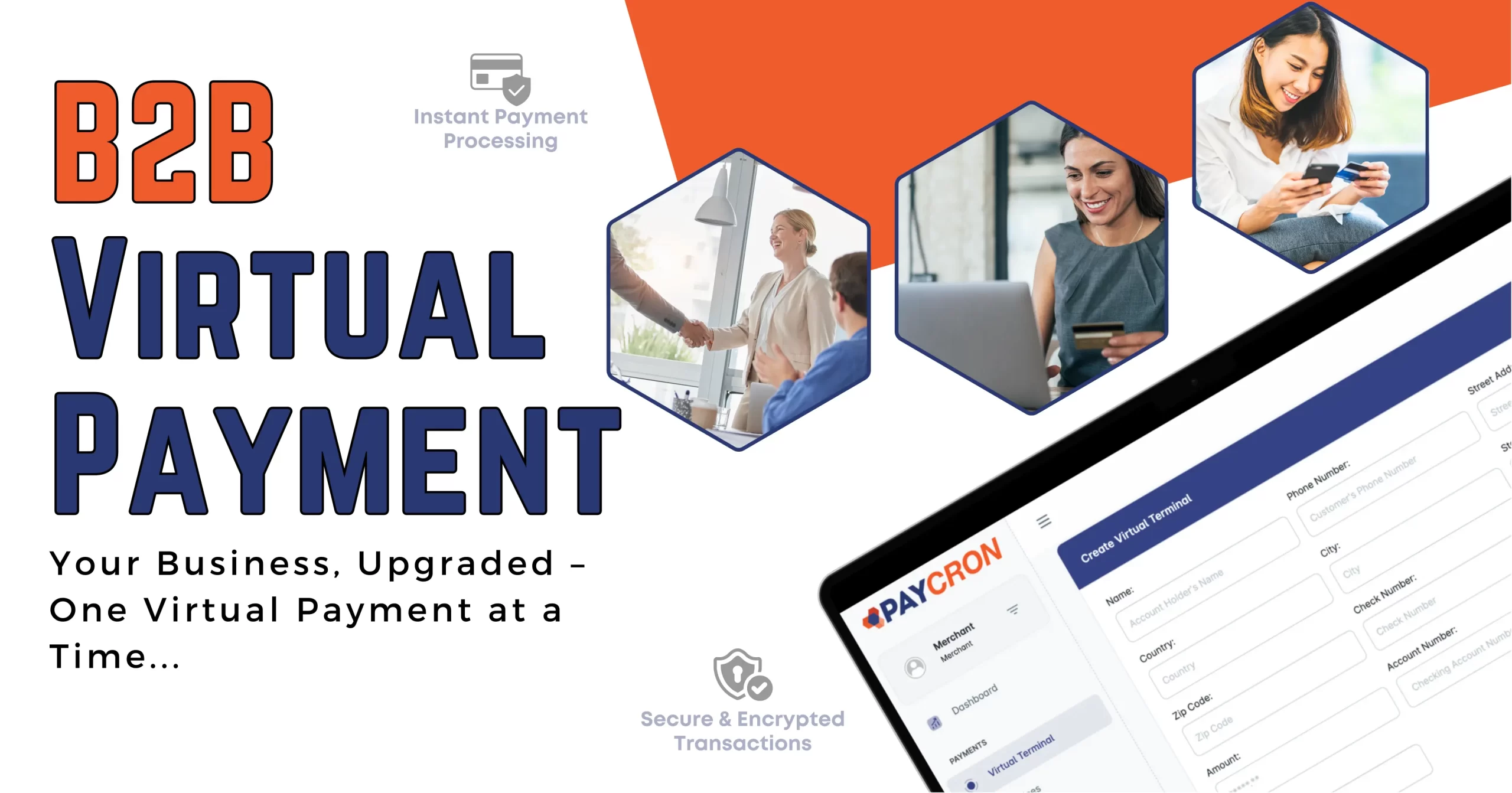
| April 4th, 2018 |
Virtual Terminals Reshape B2B Payment Solutions!
Summary:
This content explores how virtual payment terminals are revolutionizing B2B payment solutions by offering fast, secure, and cost-effective ways for businesses to handle transactions without the need for physical hardware. As digital transformation accelerates, virtual terminals are becoming essential tools for businesses seeking streamlined B2B payments.
Key points include:
- Educating businesses on the benefits of digital transformation.
- Offering an end-to-end solution that simplifies tracking, reporting, and chargeback management.
- Supporting multiple payment options to accommodate diverse client needs.
- Emphasizing mobility to match today’s remote and fast-paced business environment.
Benefits of switching to virtual gateways include:
- Instant payment processing through portals or mobile apps.
- Centralized financial data, reducing the need for multiple systems.
- Lower transaction costs and reduced risk, making it ideal for high-value B2B payments.
Ultimately, the piece encourages businesses to modernize their payment systems by adopting virtual terminals for better efficiency, security, and customer satisfaction.
Introduction —
Today, we’re diving into a topic that’s reshaping how businesses, especially in the B2B world, handle transactions — Virtual Payment Terminals. Whether you’re a small business owner or running a growing enterprise, this one’s for you.
Let’s start with a bit of context. Remember those bulky card-swiping machines at checkout counters? Now imagine that, but virtual — no hardware, no software installations, just a secure web-based platform that lets you process payments anytime, anywhere. That’s the power of a virtual payment terminal. It allows merchants to process transactions by securely entering the customer’s card info — like the number, name, CVV, and expiration date — right into a web portal.
This isn’t just about convenience — it’s a game changer for B2B payments, which often involve large sums and complex invoicing. In 2018, this technology was just starting to gain real traction, and it’s only grown since then. Businesses were looking for flexible, scalable, and cost-effective ways to send and receive money. And that’s exactly what virtual terminals delivered.
So how do we promote this tech to businesses still on the fence?
First up, education is key:
Many business owners stick to traditional methods just because they’re familiar — even if they’re clunky or inefficient. Financial pros should step in with real-life examples of how virtual terminals cut costs, save time, and improve payment cycles.
Second, offer an end-to-end solution:
Businesses want everything in one place — from tracking payments to managing chargebacks and generating reports. A good virtual terminal should feel like a financial control center.
Third, provide multiple payment options:
B2B clients often span different countries and industries, each with their own payment norms. Flexibility — think ACH, credit cards payments, mobile wallets — makes all the difference, especially for international dealings.
Fourth, go mobile:
Today’s business owners are on the move. Virtual terminals let them send invoices, accept payments, and check records from their phones or laptops — wherever they are.
Now, let’s talk benefits — and there are plenty.
Instant Payments:
Whether it’s through an online portal, a mobile app, or a toll-free call, your clients can pay you quickly and securely. If you’re not offering this yet, it’s time to get in touch with a merchant services provider. That’s where we come in — helping you find the right fit for your business.
Centralized Data Management:
No more juggling multiple systems. A good virtual terminal gives you dashboards with past transactions, revenue graphs, chargeback rates, and more. Everything’s in one place, visual, and easy to understand.
Cost Efficiency & Risk Reduction:
Traditional methods often come with hidden fees. Virtual payments minimize those extra costs and help you maintain a more secure, traceable transaction history — which is critical in high-volume B2B exchanges.
Final thoughts —
If you’re in B2B and still relying on outdated payment processes, it’s time to evolve. The tools are here, and they’re better than ever. Call us today — we’re ready to help you embrace financial tech that matches your ambitions.
